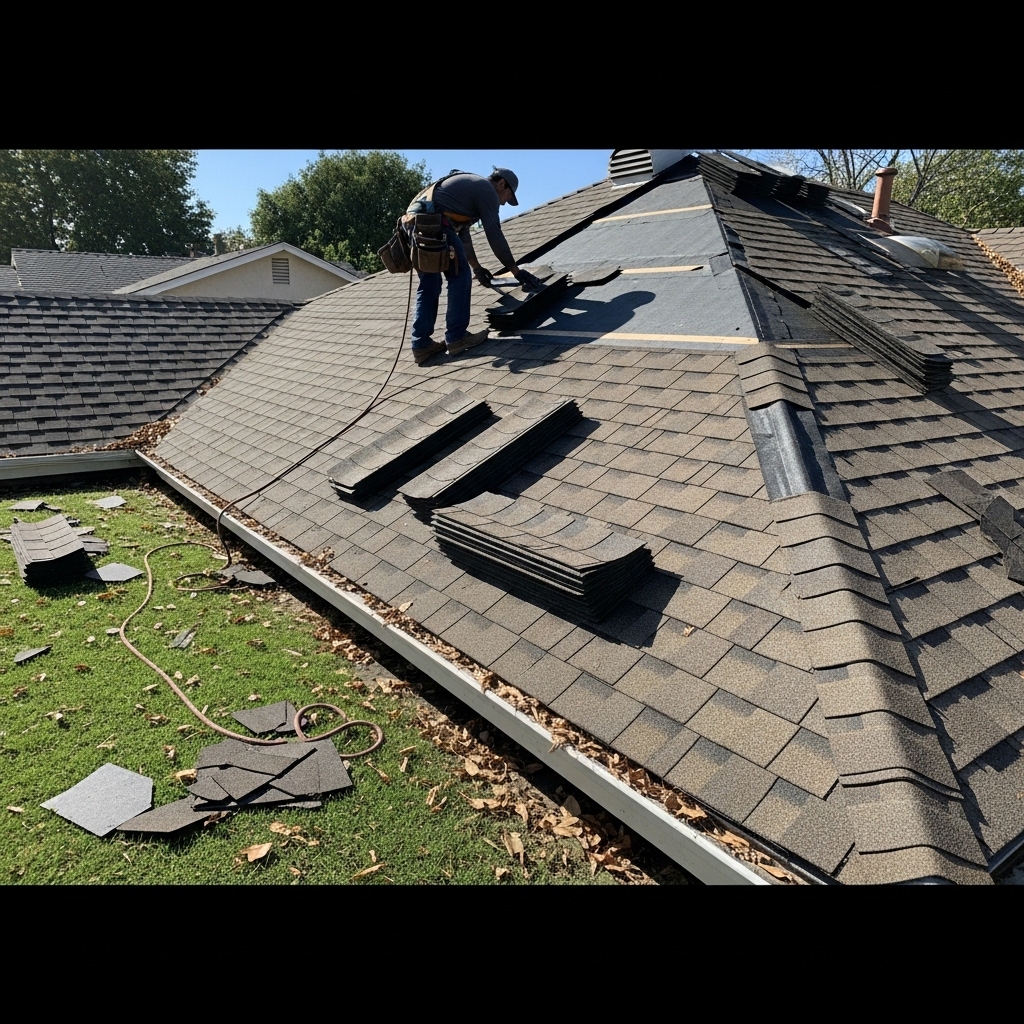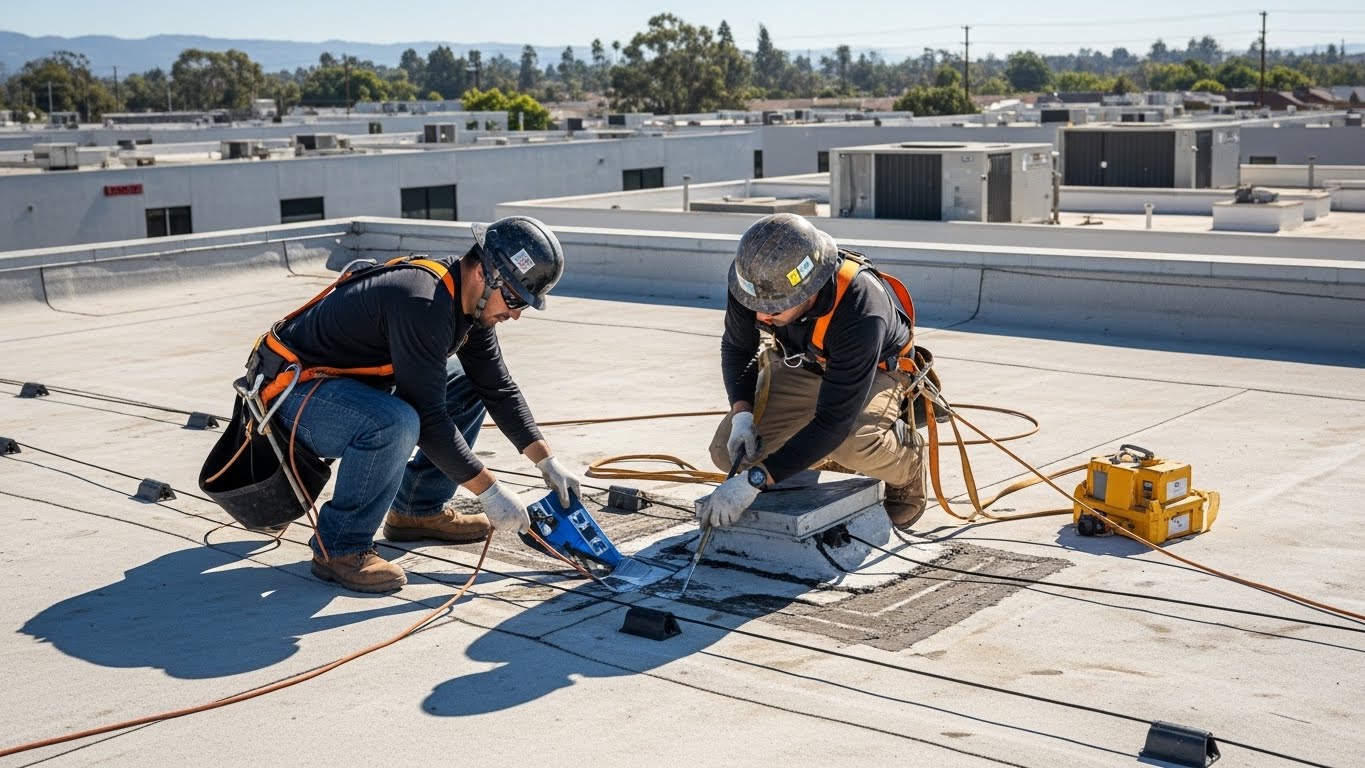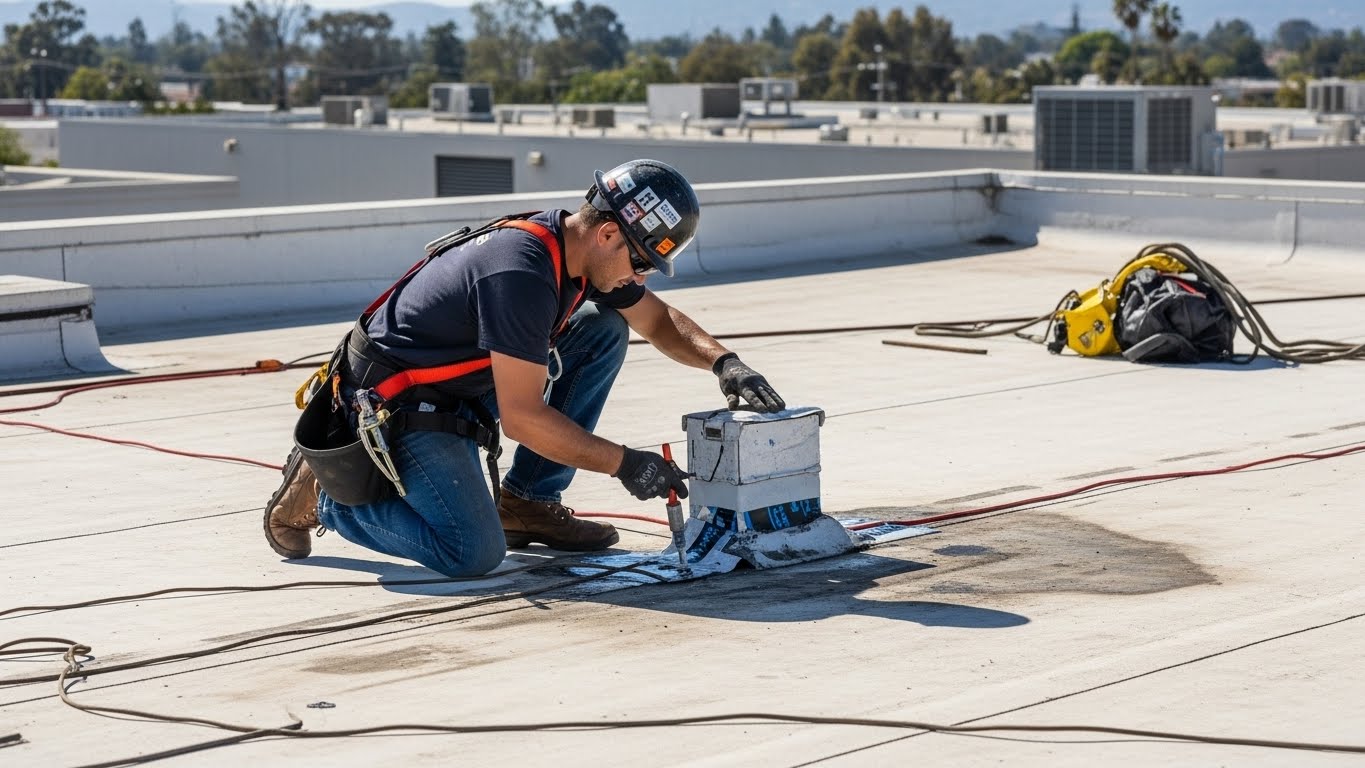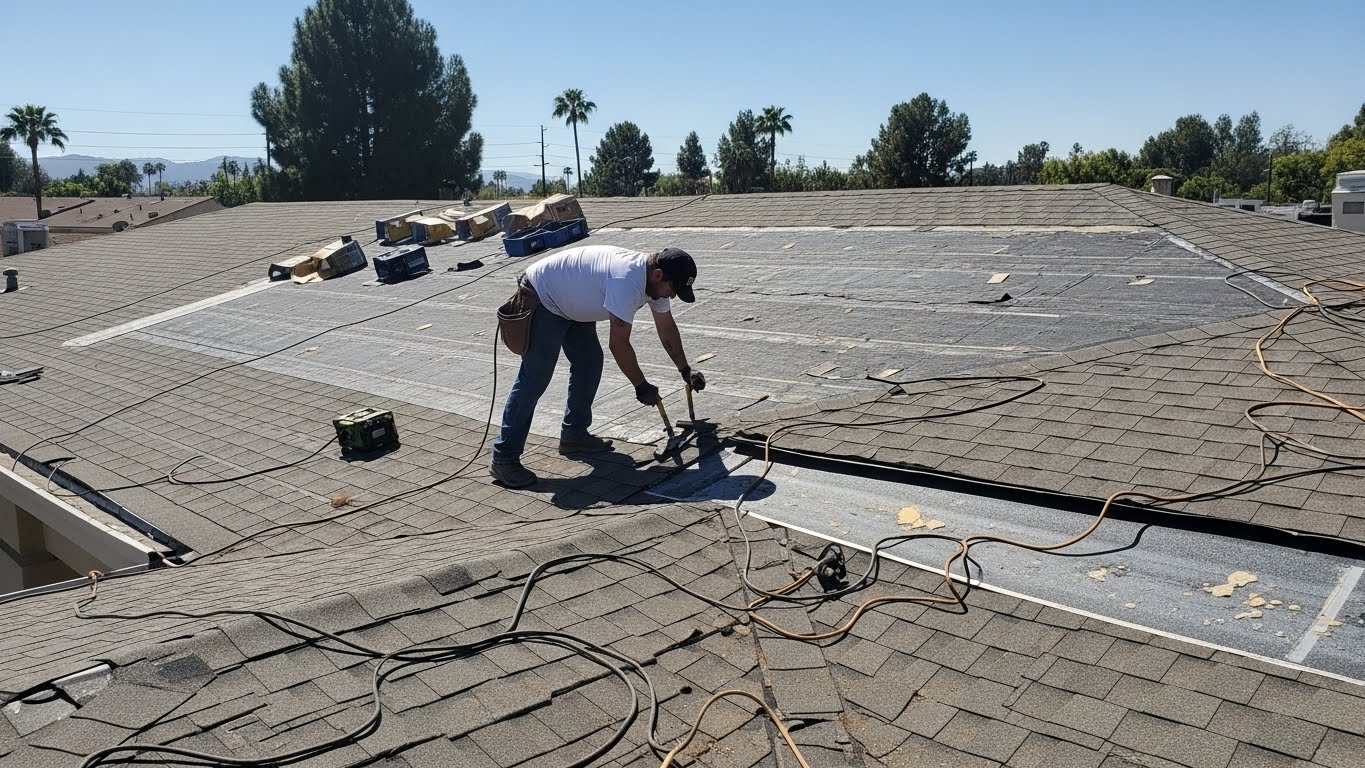When Santa Ana winds sweep across Tarzana, they test every ridge, valley, and edge of a shingle roof. The gusts arrive dry and insistent, pushing under shingle tabs, rattling ridge caps, and carrying debris that scrapes across granules. By the time the air calms, it’s common to find a few missing tabs on the lawn, a handful of lifted nails along the eaves, or a mysterious stain on a bedroom ceiling that wasn’t there the day before. As a local roofer who works the neighborhoods between the 101 and the canyon edges, I’ve learned that wind repair is part science and part art. It’s about reading how shingles moved, how wind entered the assembly, and how to restore the roof’s geometry so the next event is uneventful. For homeowners who want quick help and lasting results, a focused roof repair makes the difference between a patch and peace of mind.
Shingles are engineered to work as a layered system. Each course covers the fasteners and laps below, and the tar strip along the bottom edge seals to the shingle beneath once warmed by the sun. Santa Anas challenge these assumptions. When wind gets under a tab, it can break the seal and flex the shingle repeatedly, fatiguing the mat. If nails were set high or overdriven, the tab is more vulnerable to lift and tear. Ridge caps and hips face direct pressure and can crack along their bends. Edges, where metal drip edge guides water into gutters, can also become pry points if the overlay isn’t snug.
Our first priority after a wind event is a survey that spots both the obvious and the subtle. We re-seat any loose shingles temporarily to protect against stray showers, then map out areas where seals failed across a slope, not just in one place. We look closely at valleys, dormer sides, and any roof-to-wall transitions where counterflashing might have lifted. Pipe boots are common weak points; hard rubber or a cracked collar will leak when flexed by gusts. Skylight curbs and the flashing kits they rely on can also separate under vibration, turning a rarely used living room window into a source of drips.
Repairs are tailored to the roof’s age and shingle type. On younger roofs with localized damage, we replace torn or missing tabs with matching shingles, carefully lifting surrounding courses to avoid breaking seals that are still sound. We reset nails at the right position and depth so the head holds without cutting the mat. Where a larger field of shingles has lost adhesion, we add strategic hand-sealing using a compatible roofing cement—sparingly, and only where it supplements proper nailing and overlap. At ridges and hips, we install new caps with correct exposure and fastener placement to resist peel forces.
Wind rarely works alone. It brings debris from trees and yards, which can clog valleys and gutters. We flush these pathways and inspect the valley metal for scrapes or pinholes where abrasive branches passed over. At eaves, we make sure drip edge and starter strips are tight and in-plane so water doesn’t find a way behind the fascia in the next storm. Detailed attention on the edges buys a lot of protection, because that’s where wind tries to get under the system first.
Tarzana’s heat also plays a role in wind damage. Shingles here bake under summer sun, and over the years the binder that holds granules can dry, making the surface more brittle. When wind arrives, those granules protect the asphalt from UV and abrasion; if they’ve thinned, gusts can do more harm. That’s why our evaluations include a quick measure of overall shingle condition. If we see widespread granule loss or curling, we’ll still repair today’s issues, but we’ll also talk honestly about long-term planning so you’re not chasing wind damage every season.
Roofs with complex geometry—multiple valleys, dormers, or intersecting slopes—need special attention at the joints. Step flashing against stucco walls can lose its sequence during a previous repair or remodel, and wind then exploits the break. We reestablish the correct step-by-step layering and integrate counterflashing so wind-blown rain cannot curl underneath. These details take more time but they’re where Santa Ana gusts usually win, and where a careful repair wins them back.
Homeowners often ask about sealing products that promise to lock shingles down. While sealants have a place, relying on them across whole slopes invites problems. Excessive cement can trap moisture and dust, preventing proper bonding and making future maintenance more difficult. The better solution is precise fastening, correct exposure, and selective hand-sealing where the manufacturer recommends it, especially in high-lift areas near edges and ridges.
We also look inside the attic if access is safe. Wind can reverse typical airflow, pushing dust into odd corners and revealing where air and moisture moved. We check for daylight around penetrations, confirm that baffles are intact, and ensure that intake and exhaust vents balance so the roof deck stays dry. Good ventilation won’t stop wind, but it will help the roof recover from stress and reduce the risk of condensation masquerading as a leak.
One Tarzana home near the bowl had a persistent drip only when winds arrived from a particular direction. The roof looked fine from the ground, but on closer inspection we found a subtle lift at a headwall where a low slope met a second-story wall. The counterflashing had pulled back a quarter inch over time. We reset the flashing, replaced two courses of shingles to reestablish proper overlaps, and added a modest bead of high-flex sealant as secondary protection. The next wind event passed without a sound from the ceiling.
In another case, a bungalow lost a scattering of shingles across the backyard. The underlying issue was high nailing on a prior repair, which left tabs free to peel. We replaced the affected area, re-nailed to spec, and reinforced the leading edge near the eaves. We also tuned the gutter line and drip edge so the wind had fewer places to pry. The homeowner was relieved to see the lawn stay free of roofing after the next gusty night.
After any Santa Ana event, timing matters. Even if rain is days away, addressing lifted shingles quickly keeps the system tight and prevents more adhesive failure. Our crews move quickly after wind advisories, prioritizing active leaks and open fields, then circling back for aesthetic blending and final checks. We leave you with photos and clear guidance about what we did and what to watch for as the season changes.
How do I know if wind damage warrants a repair?
If you find shingles on the ground, see tabs lifted along edges or ridges, or notice fresh ceiling stains after a windy night, a repair is likely needed. A brief inspection will confirm whether damage is isolated or if a broader section should be addressed.
Can you repair just a few shingles, or will I need a larger section replaced?
It depends on the roof’s age and the pattern of damage. We often replace only the affected tabs when the surrounding shingles are sound. If seals failed across a wider area, a section repair ensures durability and appearance.
Will the repaired area be noticeable?
We use the closest available shingle match and tuck repairs into natural breaks when possible. Sun exposure will blend color differences over time. Our focus is a watertight fix with a clean look from the ground.
Do Santa Ana winds affect all roofs the same way?
No. Roof age, shingle type, fastening quality, and geometry make a big difference. Edges, ridges, and transitions face the most stress, so they are often where we focus reinforcement.
Should I reseal my entire roof after wind season?
Whole-roof sealing isn’t recommended. Instead, targeted repairs and selective hand-sealing in vulnerable areas provide better performance without trapping moisture or complicating future work.
What can I do to prepare my shingle roof for wind season?
Trim nearby branches, clear gutters and valleys, and schedule a quick roof check to tighten or replace any compromised areas. These simple steps prevent the majority of wind-related leaks we see each year.
If your roof has been rattled by the latest winds and you’d rather not wonder what the next gust will bring, we’re close by and ready to help. We’ll restore the roof’s layered defenses, tune the edges and ridges, and make sure transitions are ready for whatever the season brings. Reach out for an inspection and timely roof repair so your Tarzana home stays quiet and dry when the Santa Anas return.






